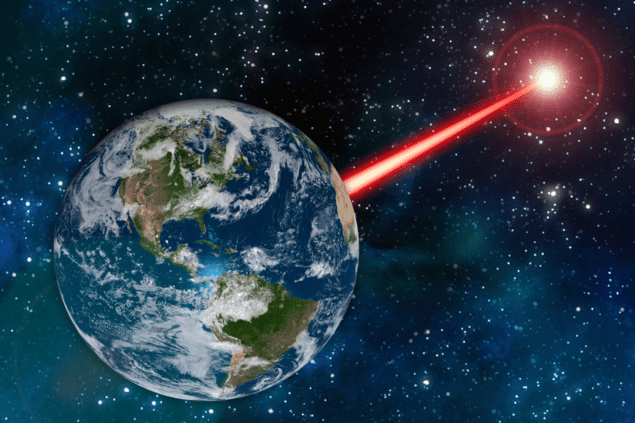
A bright laser beacon that announces our presence to extraterrestrial civilizations could soon be achievable, new research suggests. Calculations done by James Clark and Kerri Cahoy at the Massachusetts Institute of Technology suggest that current and near-future technologies could be used to produce light intense enough to be detectable to extrasolar astronomers as distant as 20,000 light-years away. The duo’s research also sheds light on how we could detect signs of intelligent life in star systems beyond our own.
For decades, some in the astronomy community pondered what would be the best way of communicating with intelligent alien life on distant planets. Once a purely academic question, the desire to communicate has been heightened recently by the ongoing discovery of large numbers of exoplanets orbiting stars other than the Sun.
Recently, two nearby exoplanets have proved particularly attractive for such efforts. These are Proxima Centauri b, a planet which lies in the habitable zone of our closest star just 4 light-years away; and the TRAPPIST-1 system, which at a distance of 40 light-years is believed to contain three potentially habitable exoplanets, are currently viewed as our best hopes for receiving replies to our messages.
Focussing on aliens
An important challenge is how to create a signal that stands out from glare of the Sun. In their study, Clark and Cahoy set out to show that the odds of such signals being detected could be greatly improved by focusing megawatt-power lasers using large telescopes. To do this, the researchers first calculated the resulting intensity when infrared lasers of various different powers were combined with telescopes of varying aperture sizes. They then calculated the resulting apparent magnitudes of the beams when viewed at varying distances from the Sun.
Clark and Cahoy discovered that a 2 MW signal fired through a 30 m telescope would have a large enough magnitude to clearly stand out from the Sun’s natural variation in infrared emissions to astronomers on Proxima Centauri b. At the same time, a 1 MW laser combined with a 45 m telescope would not only be clearly detectable in TRAPPIST-1, but would be visible at 20,000 light-years away – covering the entire Orion Arm of the Milky Way. The beams would also be broad enough to encompass the entire habitable zones of more distant stars, and could carry data at rates of several hundred bits per second, allowing for exchanges of complex messages.
Significantly, Clark and Cahoy showed that these feats are all achievable within our current grasp of both laser and telescope technologies. While the US Air Force has already demonstrated its megawatt Airborne Laser, both the 29 m Giant Magellan Telescope, and the 39 m European Extremely Large Telescope, are currently under construction in Chile, each due to begin operation in the mid-2020s. With these technologies within practical reach, it now seems that communicating with our galactic neighbours could be easier than we realized.
The research is described in The Astrophysical Journal.



